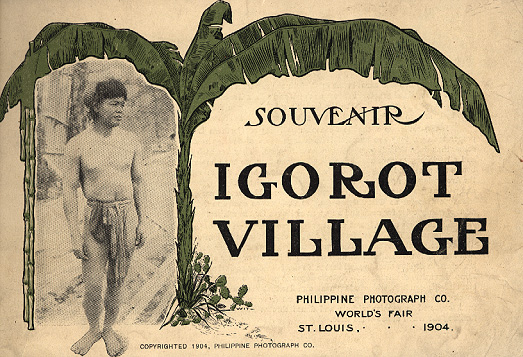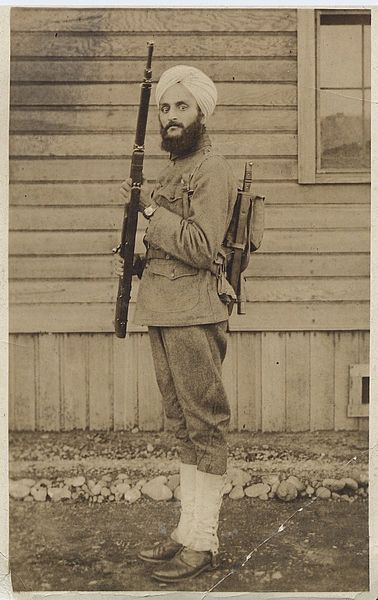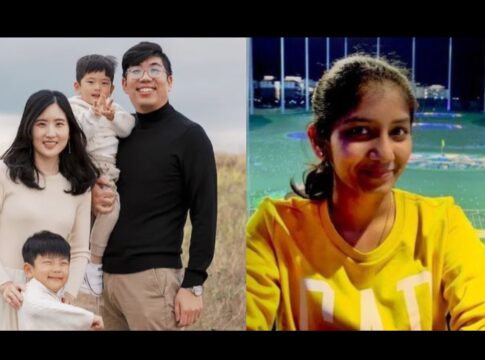
By Jana Monji, AsAmNews Contributor
Imagine seeing your co-workers die and sending back their remains to their families and after surviving several years of hard labor, not being invited to the party. One hundred and fifty years later, descendants of this survivors were the honored guests at Promontory, Utah, making sure their photos were taken so that belatedly their forefathers could be remembered in US history. This is one of the events highlighted in the first episode (Breaking Grounds) of the PBS five-part limited series Asian Americans which begins airing on Monday, 11 May 2020, (check local listings) and then will be available to stream online.
When the Transcontinental Railroad was finished and the ceremonial last spike was driven in on 10 May 1869, the Chinese laborers who had worked the Western half were not allowed in the town and not part of the celebrations. They might have originally come for the California gold rush and missed it, but the survivors of the hard labor also missed driving in of the ceremonial 17.6-karat gold final spike (now displayed at the Cantor Arts Center at Stanford University) and the commemorative photos, not because of timing but because of racism.
Narrated by Daniel Dae Kim, Breaking Ground, reminds viewers that even when Asians were found to be useful the late 1800s and the early 1900s, they were still subjected to deep racial prejudices. When an Igorot Tribe from the Philippines was exhibited at the 1904 St. Louis World Fair, it was used as an example of the evolution of humankind, a hierarchy that placed Northwest Europeans above all others. Yet for the Filipino orphan Antero Cabrera, his time as a living anthropological exhibit really earned him enough money to improve his position.

Producer Renee Tajima-Peña said, “We wanted to look at tipping points of American history, not just Asian American history, and what role Asian Americans played during those moments.” Historians of Asian American history know that neither the railroad nor the St. Louis World Fair aren’t where the first Asians show up in the United States, but the Transcontinental Railroad is often one of the few times you’ll find Asian immigrants mentioned in public school history textbooks.
LATEST STORIES
The most infamous Asian Americans, Chang and Eng Bunker, settled down together in the Deep South, became citizens, married sisters and had kids who fought in the American Civil War. The Bunkers were able to become citizens, but that was before the Chinese Exclusion Act of 1882. The Bunkers and Asians in the Civil War are a tale for another time.
Breaking Ground reminds viewers that no statue welcomed people at Angel Island. Ellis Island might have discriminated against some of its entrants, but people coming to Angel Island were predominately non-white and subjected to the indignities that were acceptable during that time period.
There were some Asians who did come through Ellis Island, often from India. Indians had a different problem. With naturalization only permitted to white and black peoples, they had to choose which side of the racial divide they wanted to join. In some cases, people from India were granted citizenship, but a landmark case changed that and had tragic consequences.
Having legal papers were so important that one man risked his life during the 1906 San Francisco earthquake. As Erika Lee notes, the Chinese were the first illegal immigrants or undocumented aliens. Having the right papers didn’t matter when a widow returned without her husband, and she was separated from her five US-born children. (A Chinese American had already established citizenship birthright in United States v. Wong Kim Ark (1898))
Breaking Ground also ventures into the Hollywood that celebrated Anna May Wong and Sessue Hayakawa, but they helped create the stereotypes that would haunt later generations.

Erika Lee noted that some of Hayakawa’s roles resulted in the “enduring casting of Asian men as a sneaky evil doer” who might be “Westernized on the outside” but was actually “Oriental through and through” with the main ambition of taking over the United States” and the “possession and defilement of white women.”
Yuen notes one of his roles “horrified” the Japanese American community.
With the talkies, the big roles went to White people in yellow face. The screen adaptation of Pearl Buck’s The Good Earth starred Paul Muni and Luise Rainer. Rainer went on to win an Oscar. Wong was only allowed to audition for the evil courtesan. Lim states, “The Good Earth epitomized the height of Hollywood yellow face.” The press preview version of Breaking Ground erroneously claims that both Muni and Rainer won Academy Awards for their roles in The Good Earth, but Muni won his Oscar for another film.
The documentary was already cut and doesn’t include more recent victories in cinema (e.g. The Farewell or Crazy Rich Asians), but it does show that 150 years later, the Chinese Americans through their descendants are now part of railroad history.
As noted previously, the film doesn’t full identify people in the subtitles so you might not realize the significance of their presence or their credentials. Remember, this is a survey course in Asian American history, and there’s more information available, particularly in the books written by some of the historians included here.
Asian Americans is a five-part series with episodes 1 and 2 airing Monday, May 11, 2020. Breaking Ground airs at 8 p.m. PST (Check local listings).
Scholars:
Vivek Bald, an MIT associate professor of comparative media studies/writing, who has been looking into the lost history of South Asian Americans, leads us to the story of a silk merchant, Moksad Ali, a Bengali Muslim. His book Bengali Harlem and the Lost Histories of South Asian America was published in 2013 by Harvard Press.
Candy Gourlay is a former editor for the Philippine Daily and former London correspondent for Inter Press Service.
Erika Lee (The Making of Asian America, in Chinese and English and Angel Island: Immigrant Gateway to America) is Regents Professor, a Distinguished McKnight University Professor, the Rudolph J. Vecoli Chair in Immigration History, and the Director of the Immigration History Research Center at the University of Minnesota.
Shirley Lim, associate professor in the Department of History at Stony Brook University, authored A Feeling of Belonging: Asian American Women’s Public Culture, 1930–1960 (NYU Press, 2006)
Mae Ngai is the Lung Family Professor of Asian American Studies and Professor of History at Columbia University. Her focus is U.S. legal and political history and questions of immigration, citizenship, and nationalism. The authored Impossible Subjects: Illegal Aliens and the Making of Modern America (2004) and The Lucky Ones: One Family and the Extraordinary Invention of Chinese America(2010).
Nayan Shah is a professor of American Studies and Ethnicity at University of Southern California who wrote Stranger Intimacy: Contesting Race, Sexuality and the Law in the North American West (University of California Press, 2011) and Contagious Divides: Epidemics and Race in San Francisco’s Chinatown (University of California Press, 2001).
Great-granddaughter of a Chinese railworker Connie Young Yu (Profiles in Excellence: Peninsula Chinese Americans; Chinatown San Jose, U.S.A.; and The People’s BiCentennial Quilt: A Patchwork History) was a founding member (1974) of the Angel Island Immigration Station Historical Advisory Committee (AIISHAC) that saved the immigration barracks for preservation. The was also the co-editor of Voices from the Railroad: Stories by descendants of Chinese railroad workers published by the Chinese Historical Society of America.
Nancy Wang Yuen (Reel Inequality: Hollywood Actors and Racism) is an associate professor at Biola University.
Legal Decisions
Tape v. Hurley (1885)
Mary and Joseph Tape had attempted to enroll their daughter, Mamie, in the all-white Spring Valley School. The California Supreme Court case decision, which precedes the Supreme Court case of Plessy v. Ferguson (1896), was that segregation was legal and the education would be separate but equal. Mamie went to what was originally called The Chinese School (now the Gordon J. Lau Elementary School at 950 Clay Street). The school was later called the Oriental School and included Chinese, Japanese and Korean students.
United States v. Wong Kim Ark (1898):
While his parents could not be naturalized, as Wong Kim Ark was born in the United States and the Supreme Court decision was that he was a citizen by birth.

United States v. Bhagat Singh Thind, (1923):
Bhagat Singh Thind applied for citizen in Washington state in 1918. Thind was a World War I vet and believe himself to be White. The Supreme Court decision was that Thind, a Sikh, was white, but not white enough. Thind received a Phd. from UC Berkeley and did become a citizen eventually. Thind died in Los Angeles in 1967.
Breaking Ground notes that Supreme Court decision on Thind had repercussions for other people from India. Vaishno Das Bahai had already been granted citizenship, but it was rescinded and he lost everything.
AsAmNews has Asian America in its heart. We’re an all-volunteer effort of dedicated staff and interns. Check out our new Instagram account. Go to our Twitter feed and Facebook page for more content. Please consider interning, joining our staff, or submitting a story.







